Abstract
Recent high-pressure studies of organic conductors and superconductors are reviewed. The discovery of the highest Tc superconductivity among organics under high pressure has triggered the further progress of the high-pressure research. Owing to this finding, various organic conductors with the strong electron correlation were investigated under high pressures. This review includes the pressure techniques using the cubic anvil apparatus, as well as high-pressure studies of the organic conductors up to 10 GPa showing extraordinary temperature and pressure dependent transport phenomena.
Introduction
Organic conductors exhibit a variety of ground states such as superconductivity, charge and spin-density waves, spin-Peierls, Mott insulator, charge ordering (or charge disproportionation) and magnetically ordered state [Citation1–7]. This variety originates from the interplay between the low dimensionality, electron correlation, electron–phonon interaction, transfer integrals (electron kinetic energy) and topology of the Fermi surface. The relative importance of these factors is determined by the molecular arrangement. Moreover, because of the van der Waals nature of the molecular packing, softness is pertinent to the organics. Therefore, these electronic states of organic conductors can be controlled by applying moderate pressures.
In organic conductors, pressure enhances tight-binding overlap integrals. There are two types of pressure effects on the electronic structure. One is a bandwidth broadening between the molecular orbitals. A typical example is the Mott transition in the κ-(BEDT-TTF)2X salts, where BEDT-TTF and X stand for donor molecule, bis(ethylenedithio)-tetrathiafulvalene and monovalent anions like X=Cu(NCS)2, Cu[N(CN)2]Cl, Cu[N(CN)2]Br [Citation5, Citation6]. In the κ-(BEDT-TTF)2X system, a competition between electron–electron Coulomb repulsion and transfer integrals results in the metal–insulator transition driven by the electron correlation. Because pressures can control the relative strength of the Coulomb repulsion U and bandwidth W, even stiffly localized electrons in the Mott insulator become itinerant under high pressures. Kagawa et al [Citation7] have recently demonstrated precise control of U/W in X=Cu[N(CN)2]Cl salt by pressure and revealed the universality class for the critical behavior at the Mott transition.
The other pressure effect on the electronic structure is the pressure-induced dimensional crossover from quasi-one-dimensional character at low pressure to quasi-two-dimensional (or three-dimensional) behavior at high pressures. A typical example is (TMTSF)2PF6, where TMTSF denotes tetramethyltetraselenafulvalene. (TMTSF)2PF6 has quasi-one-dimensional Fermi surfaces at ambient pressure and undergoes a Peierls transition, leading to an insulating spin-density-wave state at ambient pressure [Citation2–4]. Just by applying pressure the metallic state can be maintained down to low temperatures, and the superconductivity is observed at transition temperature Tc∼1 K. This has led to the discovery of the first organic superconductor [Citation4]. In this case, the applied pressure enhances the intercolumnar interactions between molecular orbitals and thus lifts dimensionality of the electronic structure so as to suppress the spin-density-wave state [Citation8]. The temperature–pressure (T–P) phase diagrams of the Bechgaard salts are basically understood by taking into account the pressure-dependent Fermi surface geometry. Because of the soft nature of organic conductors, relatively low pressures (<1.5 GPa) were sufficient to induce both effects [Citation1, Citation6].
Recently, however, pressures up to 10 GPa have become important. In 2003, Taniguchi et al [Citation9] discovered superconductivity in β′-(BEDT-TTF)2ICl2 under pressure ∼8 GPa, having the highest Tc among organic conductors. Pressure studies on most organic conductors, except for tetramethyltetrathiafulvalene (TMTTF) and BEDT-TTF salts [Citation10–13], have been conducted only in the low-pressure region (<2.0 GPa) because of their pressure-sensitive nature. Therefore, the high-Tc superconductivity under high pressures was unexpected and has been at the frontier of high-pressure studies in this research field. Nowadays, experiments on organics at pressures up to 10 GPa are strongly encouraged by search for unexpected ground states, such as high-Tc superconductivity [Citation14–28].
Insulating β′-(BEDT-TTF)2ICl2 is regarded as a Mott insulator at ambient pressure [Citation9, Citation29]. Figure shows the resistivity of β′-(BEDT-TTF)2ICl2 as a function of temperature at various pressures [Citation9]. The Mott insulating state in β′-(BEDT-TTF)2ICl2 salt collapses under high hydrostatic pressure, and pressure-induced superconductivity appears at 14.2 K (onset) under a pressure of P=8.2 GPa. Figure shows the T–P phase diagram of β′-(BEDT-TTF)2ICl2 [Citation9]. The metal–insulator transition temperature TMI gradually decreases with increasing pressure. The signature of superconducting transition appears at ∼7.0 GPa, and Tc has a maximum of 14.2 K at P∼8.2 GPa, where the Mott insulating state is completely suppressed. Further increase in pressure suppresses Tc. Thus, the superconductivity with the highest Tc is situated just in the vicinity of the metal–insulator phase boundary.
Figure 1 Resistivity of β'-(BEDT-TTF)2ICl2 as a function of temperature for various pressures. (Reproduced with permission from [Citation9]. Copyright 2003 The Physical Society of Japan.)
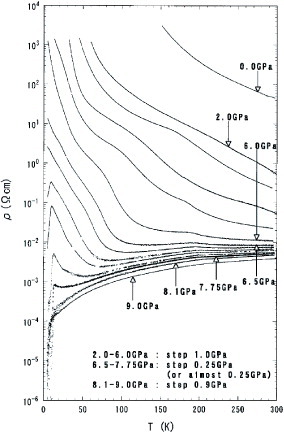
Figure 2 T–P phase diagram of β'-(BEDT-TTF)2ICl2 containing metallic (M), insulating (I), superconducting (S) and antiferromagnetic insulating (AFI) phases. The superconductivity with the highest Tc is situated just in the vicinity of the M–I boundary. (Reproduced with permission from [Citation9]. Copyright 2003 The Physical Society of Japan.)
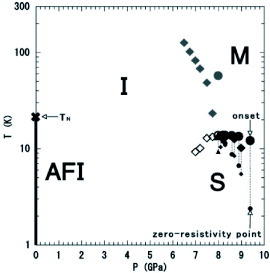
After this discovery, Kontani theoretically studied the emergence of superconductivity behind the robust Mott insulator using fluctuation–exchange approximation [Citation30]. In an expected phase diagram by the fluctuation–exchange approximation, the d-wave superconductivity may be realized next to the antiferromagnetic insulating phase in β′-(BEDT-TTF)2ICl2, as a result of the pressure-induced crossover from one-dimensional to the two-dimensional state. Shortly after that, Miyazaki and Kino performed the first-principles calculation and predicted the crystal structure under pressures up to 12 GPa [Citation31]. Miyazaki and Kino predicted that the bandwidth crossing the Fermi level becomes almost double at 8 GPa, and the dimensionality of the Fermi surface is affected significantly. These theoretical studies suggest that the electronic structure of organic conductors is markedly changed by pressures ∼10 GPa.
This paper reviews the recent progress in high-pressure studies of organic conductors. It is organized as follows: section 2 describes high-pressure technique using a cubic anvil apparatus and pressure-transmitting media. In section 3, the recent intriguing findings are reviewed. Since the discovery of superconductivity in β′-(BEDT-TTF)2ICl2, the strong insulators arising from the electron correlation were metallized under high pressure and a variety of fascinating phenomena were discovered. Recent topics include the anomalous metallic state in (TTM-TTP)I3 with quasi-one-dimensional half-filled band, the possible quantum critical point in the reduced π-donor system (MeDH-TTP)2AsF6, metallization of the Peierls insulator TTF-TCNQ, new aspect in unified T–P phase diagram in (TMTTF)2X (X = AsF6 or SbF6), and the robust superconducting state against pressure and non-Fermi liquid behavior in the doped Mott system κ-(BEDT-TTF)4Hg2.89Br8. Section 4 summarizes this paper and provides the perspectives.
Generation of high pressures
Ideal hydrostaticity of pressure and low temperatures can be obtained with a conventional piston-cylinder setup and appropriate pressure-transmitting fluid [Citation1]. However, the pressure is limited to ∼3 GPa. In addition, uniformity of high pressure at low temperature is a serious problem because pressure-transmitting media easily freeze under pressure. To investigate the transport phenomena under hydrostatic pressure >3 GPa, a cubic anvil apparatus that works at temperatures down to 2 K under pressures up to 10 GPa has been developed by Môri et al [Citation32]. The highest superconducting Tc among organic conductors was found with this apparatus [Citation9, Citation32]. In addition, a pressure-transmitting medium with high solidification pressure like Daphne 7373 and 7474 oil is required to obtain good hydrostaticity [Citation33, Citation34]. In this section, we describe the principle of the cubic anvil apparatus and pressure-transmitting medium. The hydrostaticity of cubic anvil apparatus is demonstrated by the pressure-induced superconductivity in the inorganic conductor NbSe3.
Cubic anvil apparatus
Figure shows the central part of the cubic anvil cell. The sample is immersed in a pressure-transmitting medium such as Daphne 7373 [Citation33, Citation34], which maintains hydrostatic pressure. It is encapsulated in a Teflon cell surrounded by a pyrophyllite block. This block is compressed evenly from six directions with six tungsten-carbide anvils. The anvils crush the pyrophyllite gasket and compress the Teflon cell. Six compression directions result in good hydrostaticity even if the applied high pressure solidifies the pressure medium. Furthermore, because the load from outside is controlled during the cooling, the pressure is kept constant in the course of the temperature cycle. A 5-tesla magnet can be combined with this apparatus, and the temperatures ∼2 K can be obtained. A cubic anvil press smaller than 103 cm3 has been developed [Citation35]. With such apparatus, even lower temperatures are accessible using 3He or dilution refrigerators. Calibration should be carried out independently, using, for example, resistivity transitions of Bi at 2.55, 2.70 and 7.70 GPa [Citation36]. The cubic anvil pressure apparatus rigorously maintains a constant pressure in the course of the temperature cycle. The soft nature of organics results in the large thermal contraction upon cooling from 300 to 4.2 K, corresponding to compression ∼0.4 GPa [Citation37]. In the pressure region of the cubic anvil cell, organic materials are already well compressed, and such adjustments as constant-volume correction are less required. Thus, using this apparatus, we can measure the intrinsic temperature dependence of resistivity for organics. The latter is essential for understanding various phenomena, such as electron–electron and electron–phonon interactions, scattering by spin fluctuations associated with magnetic orders, as well as the mechanism of unconventional superconductivity.
Figure 3 Central part of a cubic anvil pressure cell. A sample with four wires is encapsulated in a Teflon cell with a pressure medium. The Teflon cell is surrounded with a pyrophyllite gasket, which is evenly compressed from six directions using six tungsten-carbide or sintered-diamond anvils. (Courtesy of Dr M Hedo.)
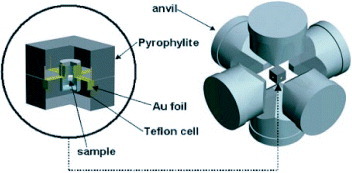
To demonstrate the good hydrostatic condition of the cubic anvil apparatus, Yasuzuka et al [Citation14] investigated the effect of pressure on Tc in a typical quasi-one-dimensional inorganic conductor NbSe3. This material exhibits two charge-density-wave phase transitions below 3 GPa and becomes superconducting at Tc ∼ 4 K in pressures above 2.5 GPa. Figure shows the temperature dependence of the resistance in single-crystal NbSe3 at several pressures. At 1.8 GPa, no drop in resistance is observed down to 2.65 K, but above 2.6 GPa, superconducting transition is clearly observed. The transition temperature Tc is defined as the temperature at which the resistance becomes one-half of that in the normal state; it is maximal at pressure Pc, where the no charge-density-wave phase exists, and decreases gradually at higher pressures. The width of the superconducting transition is large at 2.6 GPa, but decreases with increasing pressure. Therefore, the large transition width at 2.6 GPa is not due to the pressure inhomogeneity, but is intrinsic to the superconducting phase transition coexisting with the charge-density-wave phase. It may originate from the fluctuation effect on the superconducting order parameter near Pc. The transition is very sharp above 3.2 GPa, where no charge-density-wave phase exists.
Figure 4 Pressure dependence of the superconducting transition in NbSe3. A broad superconducting transition is observed at 2.6 GPa. The transition width sharpens with increasing pressure revealing high pressure homogeneity. (Reproduced with permission from [Citation14]. Copyright 2005 The Physical Society of Japan.)
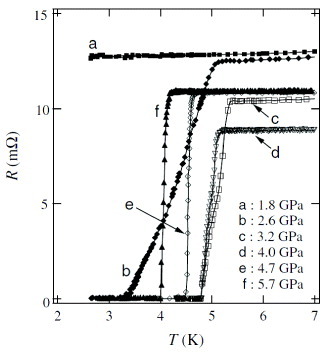
Let us estimate the pressure inhomogeneity at 5.7 GPa. The superconducting transition width at 5.7 GPa and ΔTc/ΔP between 4 and 5.7 GPa are ΔTc=0.19 K and ΔTc/ΔP = 0.45 K GPa-1, respectively. Thus, the pressure inhomogeneity is 0.19 K/(0.45 K GPa-1) = 0.35 GPa within the Teflon cell, if we assume that the superconducting transition width is due to the pressure inhomogeneity.
Pressure-transmitting media Daphne 7373 and Daphne 7474
Whereas the cubic anvil apparatus generates hydrostatic pressure by equal compression from six directions, the piston cylinder relies on the pressure-transmitting medium. Piston cylinders are important because they are compatible with various types of experiments such as electrical transport, magnetic susceptibility, nuclear magnetic resonance (NMR) and electron spin resonance. The solidification pressure (Psolid) of Daphne 7373 (a mixture of olefin oligomer) is 2.2 GPa [Citation34]. For a single cylinder of BeCu cell, the maximum pressure without deformations is 1.5 GPa. Development of a double cylinder of NiCrAl increased the maximum pressure to 4 GPa [Citation38], though ∼3 GPa is applied in practice. If Daphne 7373 is used above 2.2 GPa, the pressure is not hydrostatic. Very interesting thermodynamic phenomena were found right in this critical region of 2–3 GPa [Citation39–Citation42], and thus a new pressure-transmitting medium with higher Psolid was strongly required. The pressure medium PES01 (polyethylsiloxane) was suggested claiming Psolid = 3.8 GPa, which is an extrapolated value from low-pressure experiments [Citation43]. However, actual measurement reveal Psolid = 3.0 GPa at room temperature [Citation33]. More recently, Daphne 7474 (alkylsilane) has been introduced with Psolid=3.7 GPa at room temperature [Citation44]. Remarkably, the room-temperature value of Psolid = 3.7 GPa in Daphne 7474 increases almost linearly with temperature up to 6.7 GPa on warming up to 100 °C.
Note that when Psolid is in the 3–4 GPa range, an elaborate method is required for finding Psolid: a strain gauge is placed in a cubic anvil cell, and its resistance is being measured. A clear kink in resistance appears during pressurization. The Psolid values obtained with this method are confirmed independently using a diamond anvil cell. There, Psolid is determined from the pressure, above which the standard deviation of pressure at various locations inside the sample starts to increase.
Methanol–ethanol mixture is known to have Psolid=10 GPa, but has a large compressibility and damages the conducting paste, which is commonly used for transport measurement in organic materials. Flourinert 77/70 mixture (Psolid=1 GPa) shows a large pressure reduction when cooled to low temperatures, but unfortunately, its manufacturing has been discontinued. In conclusion, increasing interest in the pressure range of 1–3 GPa promotes usage of Daphne 7474 as a pressure medium.
Metallization of organics under high pressure
In this section, we summarize the recent experimental high-pressure results. Various interesting physical phenomena were found and discussed. These observations provide us new problems such as anomalous metallic state (non-Fermi liquid), superconductivity and pressure-induced metallization driven by quantum fluctuations.
(TTM-TTP)I3: metallization of quasi-one-dimensional half-filled system
The Hubbard model is well known as a useful model for understanding the nature of various strongly correlated electron systems, such as high-Tc copper-oxide superconductors, heavy fermion compounds and organic conductors. In spite of its apparent simplicity, there is still no general solution, or even a consensus on its fundamental properties. Notable exceptions are the cases of one and infinite dimensions. In one dimension, an exact solution is available. Particularly, the one-dimensional half-filled case is special and important because it corresponds to the strong coupling limit of the Hubbard model, i.e. the on-site Coulomb repulsion U→∞ [Citation45]. In other words, no matter how small U is, the ground state is the Mott insulator. Therefore, pressure-induced metallization of a real system with the highly one-dimensional half-filled band is one of the most challenging topics in strongly correlated electron systems in terms of finding unexpected physical phenomena.
Taking advantage of the softness of organics, Yasuzuka et al [Citation18–20] studied the temperature dependence of the resistivity in (TTM-TTP)I3 under pressure, where TTM-TTP stands for 2,5-bis[4,5-bis(methylthio)-1,3-dithiol-2-ylidene]-1,3,4,6-tetrathiapentalene) [Citation43, Citation44]. Figure (a) shows the structure of the TTM-TTP donor molecule [Citation46, Citation47]. The donor of TTM-TTP consists of two parts of tetrathiafulvalene (TTF), and therefore (TTM-TTP)I3 is regarded as the extended π-donor system with a small on-site Coulomb interaction U. From the band structure calculation [Citation46, Citation47], the interchain interactions ta and tb (<10 meV) are less than 1/20 of the intrachain interaction tc=260 meV, which is much more one-dimensional than the typical quasi-one-dimensional Bechgaard salts. In the interchain directions, the TTM-TTP molecules cannot approach each other closely because of the steric hindrance of the terminal -SCH3 groups. As a result, this material has a highly one-dimensional Fermi surface and a genuine half-filled band as shown in figure (b). Despite the highly one-dimensional half-filled system, this compound exhibits a very high conductivity of 700 S cm-1 at room temperature. The temperature dependence of resistivity shows the metal–insulator transition at TMI≅120 K. For the insulating state of (TTM-TTP)I3, extensive studies of static magnetic susceptibility, electron spin resonance, nuclear magnetic resonance, X-ray scattering, and Raman scattering suggest the occurrence of intramolecular charge ordering state by Coulomb correlation [Citation48]. The metal–insulator transition temperature TMI decreases with increasing pressure, but is still below 90 K even at 1.1 GPa [Citation47]. Hence, pressures above 1 GPa are required for the metallization of (TTM-TTP)I3.
Figure 5 (a) Structure of TTM-TTP donor molecule. (b) Calculated tight-binding band structure (left) and Fermi surface (right) of (TTM-TTP)I3. (Reproduced with permission from [Citation18]. Copyright 2006 The Physical Society of Japan.)
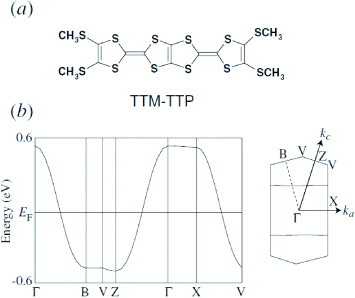
Figure shows the temperature dependence of resistivity under pressures up to 8.0 GPa [Citation18–20]. At ambient pressure, the resistivity gradually increases with decreasing temperature above TMI (= 128 K), and then rises sharply below TMI. Here, TMI is defined as the kink in the ρ(T) curve. The insulating phase is gradually suppressed with increasing pressure but survives even at 8.0 GPa. Above 5.7 GPa, metallic temperature variation appears at high temperatures for 70 <T < 300 K. The power law behavior ρ(T)∝Tα is assumed for this temperature region. As shown in the inset of figure , the values of α are estimated as α = 0.24 (5.7 GPa), 0.35 (7.0 GPa), and 0.36 (8.0 GPa). The fitting region is small, and subtracting residual resistivity is difficult because of the metal–insulator upturn at low temperatures. Thus accurate values of α are hard to deduce. Nevertheless, we can say, at least, that the metallic state above 5.7 GPa cannot be simply explained on the basis of the Fermi liquid model (α = 2) and the electron–phonon scattering (α=1) described with the classical Bloch–Grüneisen theory. The nature of the metallic state was discussed in terms of the Tomonaga–Luttinger liquid described using the Hubbard model as following.
Figure 6 Temperature dependence of the resistivity of (TTM-TTP)I3 under pressures up to 8 GPa. (Reproduced with permission from [Citation18]. Copyright 2006 The Physical Society of Japan.)
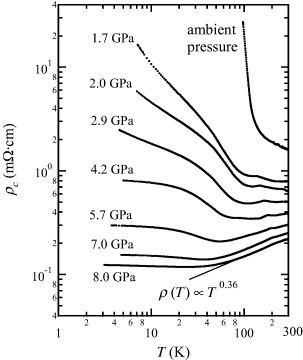
To consider the origin of the small exponents, α(<2), the effects of pressure and temperature on the dimensionality of (TTM-TTP)I3 above 5.7 GPa should be discussed. It is expected that application of pressure increases the intra- and interchain transfer integrals t|| and t⊥. Then, the suppression of the insulating phase is explained by the effect of bandwidth broadening and the increase in dimensionality. As shown in figure (c), (TTM-TTP)I3 has stronger one-dimensionality than typical quasi-one-dimensional organic conductors. At lower pressures, the electrons will behave as a one-dimensional liquid with a half-filled band. At higher pressures, the so-called `dimensional crossover', which is often discussed in Bechgaard salts, is the key physics for exotic metals such as the Tomonaga–Luttinger liquid state. To consider the dimensionality of (TTM-TTP)I3 under pressures above 5.7 GPa, Yasuzuka et al [Citation18–20] discussed the dimensional crossover temperature Tx(=t⊥/π) at 8 GPa. From the band structure calculation, Tx was estimated as 37 K at ambient pressure. To estimate Tx at 8 GPa, the recent theoretical study by Miyazaki and Kino [Citation31] is instructive, in which they predicted the pressure effect on the electronic structure of a Mott insulator β′-(BEDT-TTF)2ICl2. The Mott insulator in β′-(BEDT-TTF)2ICl2 is suppressed totally by applying pressures above 8 GPa, which is comparable to the pressure effect on the insulating state of (TTM-TTP)I3, in spite of the difference in the nature of the insulating phase (Mott insulator versus charge ordering state) between β′-(BEDT-TTF)2ICl2 and (TTM-TTP)I3. According to Miyazaki and Kino [Citation31], the decrease in the lattice parameters of β′-(BEDT-TTF)2ICl2 was predicted as ∼10% at 12 GPa and was rather isotropic. The calculated bandwidth was almost twice as that at 8 GPa for β′-(BEDT-TTF)2ICl2. Here, Yasuzuka et al assumed that the pressure dependence of the lattice parameter is nearly isotropic for (TTM-TTP)I3, and both t|| and t⊥ for (TTM-TTP)I3 at 8 GPa are approximately twice as large as those at ambient pressure. Under these assumptions, they estimated Tx as ∼74 K at 8 GPa. Therefore, (TTM-TTP)I3 might be regarded as an effective one-dimensional system for 74 K <T< 300 K. As seen in the inset of figure , there are upward deviations from ρ(T)∝Tα with α ∼ 0.3 below 70 K, which might be related to the dimensional crossover. It is expected that the steric hindrance of the terminal -SCH3 groups plays an important role in maintaining high one-dimensionality with Tx∼ 74 K even under the high pressure of 8 GPa.
Figure 7 T–P phase diagram of (TTM-TTP)I3. TMI is defined as the kink in the ρ(T) curve. (Reproduced with permission from [Citation18]. Copyright 2006 The Physical Society of Japan.)
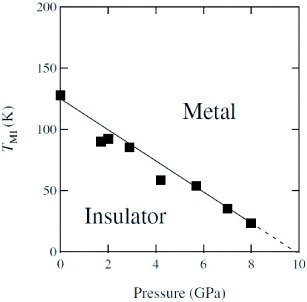
Figure shows the T–P phase diagram of (TTM-TTP)I3 derived from the resistivity measurements. With increasing pressure, TMI decreases linearly. The principal effect of pressure is the enhancement of the bandwidth W, whereas the on-site Coulomb interaction U should remain unchanged. Roughly speaking, the obtained phase diagram is convincing because the charge localization associated with U is responsible for the metal–insulator transition. It is expected that TMI becomes 0 K near 10 GPa as seen in figure . The metallic ground state may appear near 10 GPa in (TTM-TTP)I3.
Figure 8 Geometry of an anisotropic triangular lattice with the transfer integrals t||≫t⊥1, t⊥2 discussed by Tsuchiizu et al [Citation49].

After these findings, Tsuchiizu et al [Citation49] theoretically studied the mechanism of the metallization of (TTM-TTP)I3. Here, the quasi-one-dimensional half-filled Hubbard model on an anisotropic triangular lattice with two different hopping integrals t⊥1 and t⊥2 between nearest-neighbor chains was taken into account as shown in figure . Note that the extended Hückel calculations for (TTM-TTP)I3 indicate that there are two types of interchain transfer integrals, t⊥1 ∼ 9 meV and t⊥2 ∼ 6 meV, which are small compared with the intrachain transfer integral t‖∼ 260 meV [Citation43, Citation44]. According to Tsuchiizu et al [Citation49], the system remains always insulating for large t⊥1 and t⊥2 = 0, whereas a charge gap collapses and a metallic state with a Fermi surface appears in the case of large t⊥2. The triangular lattice geometry of the system is considered a key factor in the metallization of (TTM-TTP)I3.
(MeDH-TTP)2AsF6: possible quantum critical point in a reduced π-donor system
In order to realize a system with a strong Coulomb repulsion as compared with the typical BEDT-TTF donor, Nishikawa et al [Citation50] have designed and synthesized an organic donor with a novel π-electron system DODHT, and developed pressure-induced superconductors based on this donor. Here DODHT stands for (1,4-dioxane-2,3-diyldithio)dihydrotetrathiafulvalene. The synthetic strategy of the DODHT concerns optimization of U and the intermolecular transfer integral t: the reduction of the π-system of TTF skeleton and the introduction of a bulky dioxane ring enhances U and decreases t. Therefore, the DODHT molecule is called the reduced (in size) π-system donor. At ambient pressure, the ground state of β”-(DODHT)2PF6 is a charge-ordered insulator [Citation51]. The DODHT system shows interesting T–P phase diagram having a remarkable competition between the superconducting and the charge ordering states at a critical pressure of ∼13 kbar [Citation51]. From these observations, it is anticipated that the charge fluctuations associated with the charge-ordered state play an important role in the occurrence of superconductivity. Several theoretical studies [Citation52, Citation53] also showed that the superconductivity is mediated by the charge fluctuations instead of the spin fluctuations like the high-Tc copper-oxide superconductors and the heavy fermion compounds. Thus, molecular conductors based on the reduced π-system donor have provided a fascinating system related to the strong Coulomb interaction.
Recently, a reduced π-donor MeDH-TTP has been designed by Nishikawa et al [Citation54, Citation55] to realize strong Coulomb repulsion without a bulky substituent. Here MeDH-TTP denotes 2-methyl-5-(1,3-dithiolan-2-yliden)-1,3,4,6-tetrathiapentalene, as shown in figure (a). The quasi-two-dimensional organic conductor (MeDH-TTP)2AsF6 was successfully synthesized. Its crystalline structure has a monoclinic symmetry and the donor arrangement is of the κ-type. According to the band calculation, this salt has a much smaller dimerization gap than typical κ-BEDT-TTF salts, leading to a quarter-filled band, as shown in figure (b). The temperature dependence of resistivity showed insulating behavior from 300 to 4.2 K. The antiferromagnetic transition at 40 K was suggested from an electron spin resonance experiment. One naively expects that the insulating state is associated with the Mott insulator because the arrangement of donor molecules is of the κ-type with donor dimerization, in which the Mott insulator is frequently observed. According to the band calculation, however, the dimerization gap is about ten times smaller than that for the typical κ-BEDT-TTF salt, indicating that this salt is a quarter-filled system. The intradimer transfer energy tdimer and the bandwidth W are estimated as ∼0.17 and ∼0.92 eV, respectively [Citation55]. The value of Udimer/W, where Udimer is an on-site Coulomb energy of a dimer, is estimated as 0.37 (which is much smaller than 1) through the relation Udimer/W∼2tdimer/W in the limit of Udonor≫tdimer, where Udonor is an on-site Coulomb energy of the donor. Nevertheless, the insulating state appears below room temperature at ambient pressure. Since MeDH-TTP is the reduced π-donor molecule as compared with the BEDT-TTF molecule, (MeDH-TTP)2AsF6 will have stronger on-site and intersite Coulomb repulsions than BEDT-TTF salts. Thus, the occurrence of the insulating state suggests that not only the on-site Coulomb interaction but also the intersite Coulomb interaction plays an important role in this system. Consequently, a charge-ordered insulator is speculated as the ground state of this salt, instead of the Mott insulator. However, the ground state of this salt is still unclear.
Figure 9 (a) Structure of MeDH-TTP donor molecule. (b) Calculated tight-binding band structure (left) and Fermi surface (right) of (MeDH-TTP)2AsF6. (Reproduced with permission from [Citation21]. Copyright 2006 The Physical Society of Japan.)
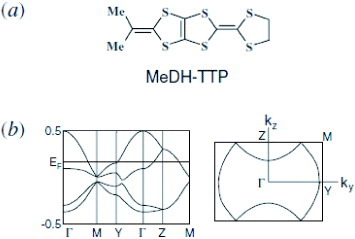
The T–P phase diagram of the reduced π-donor system (MeDH-TTP)2AsF6 was studied by Yasuzuka and co-workers [Citation21–23] using resistivity measurements. Figure shows the in-plane resistivity of (MeDH-TTP)2AsF6 as a function of temperature at various pressures up to 6.0 GPa. At ambient pressure, the resistivity exhibits nonmetallic behavior (dρ/dT< 0) from 300 to 4.2 K with an activation energy of 31.5 meV. In d(logρ)/d(1/T) versus T plot, there is a broad peak at ∼137 K at ambient pressure (not shown here). The metal–insulator transition temperature TMI is determined from the peak of d(log ρ)/d(1/T). With increasing pressure, TMI decreases monotonically. At 1.5 GPa, metallic behavior appears in the high-temperature range followed by low-temperature semiconducting behavior with a broad resistivity minimum around Tmin=153 K. The Tmin shifts to lower temperatures with an increase in pressure. The metal–insulator transition is rapidly suppressed at ∼2.2 GPa. At pressures above 2.4 GPa, no anomaly is observed in the resistivity-temperature curve, showing that a metallic state is stabilized down to 2.6 K.
Figure 10 Temperature dependence of the in-plane resistivity of (MeDH-TTP)2AsF6 under pressure. (Reproduced with permission from [Citation21]. Copyright 2006 The Physical Society of Japan.)

Just above Pc=2.4 GPa, resistivity exhibits simple metallic behavior, but the resistivity exceeds the so-called Mott–Ioffe–Regel (MIR) limit, ρMIR=(h/e2)d=4.2 mΩ·cm, for an interlayer distance d of 16 Å at T∗=37 K. Here, T∗ is defined as ρ(T∗)=ρMIR. Note that T∗ shifts to higher temperature with increasing pressure (see figure ). This behavior suggests that the high-temperature metallic state is a `bad metal' having mean free paths smaller than the lattice constant. Bad metal behavior is associated with various strongly correlated systems.
Next, we discuss the low-temperature behavior in the high-pressure metallic state. At 2.4 GPa, ρ(T) increases linearly with increasing T2 below T2=441 K2(T=21 K), clearly showing a well-known manifestation of the electron–electron scattering in the Fermi liquid state. Here, Tcoh is defined as the temperature where ρ(T) begins to deviate from the Fermi liquid behavior. Yasuzuka et al [Citation21–23] found that Tcoh increases with increasing pressure. The data are analyzed using the expression ρ(T) =ρ0+AT2. As seen in figure , the constant A changes by at least a factor of 10 from its high-pressure value. In the Fermi liquid picture, A is proportional to m*2, where m∗ is the effective mass of carriers. Since A at Pc is one order of magnitude larger than that at 6.0 GPa, m∗ at Pc must be ∼3 times larger than that at 6.0 GPa, suggesting the enhancement of electron correlation as pressure approaches Pc. Moreover, ρ0 also increases near Pc. Similar behavior is observed near the quantum critical point in various heavy fermion systems. Theoretical studies showed that the residual resistivity is enhanced by quantum critical fluctuations. Therefore, the divergence of both A and ρ0 suggests that Pc is a possible quantum critical point in (MeDH-TTP)2AsF6.
Figure 11 The quadratic temperature coefficient A (▪) and residual resistivity ρ0 (▴) as a function of pressure. (Reproduced with permission from [Citation21]. Copyright 2006 The Physical Society of Japan.)
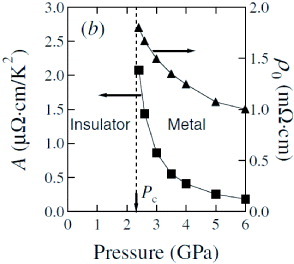
The characteristic temperatures, TMI, Tmin, T∗ and Tcoh, are summarized as the T–P phase diagram of (MeDH-TTP)2AsF6 in figure . Both TMI and Tcoh approach absolute zero as P→Pc. The strong suppression of Tcoh near Pc should be related to the destruction of Fermi liquid quasiparticles by the enhancement of electron correlation. In the vicinity of Pc, the quantum fluctuations will be strong enough to drive the transition from the insulating to the metallic phases, leading to a drastic decrease in TMI near Pc.
Figure 12 T–P phase diagram of (MeDH-TTP)2AsF6. Both TMI and Tcoh approach zero as P→Pc. (Reproduced with permission from [Citation21]. Copyright 2006 The Physical Society of Japan.)
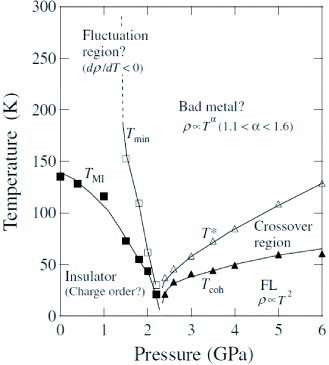
TTF-TCNQ: suppression of a charge-density-wave in a Peierls insulator
The organic conductor TTF-TCNQ has attracted tremendous interest since its discovery in 1973 [Citation56, Citation57]. TTF-TCNQ has a monoclinic crystal structure built up from parallel segregated stacks of TTF and TCNQ along the b-direction, as shown in figure . This was the first molecular crystal to show metallic behavior down to ∼60 K, below which it exhibits a series of phase transitions associated with charge-density-waves at TH = 53 K, TI = 49 K and TL = 38 K [Citation58, Citation59]. The discovery of TTF-TCNQ and its remarkable low-temperature behavior triggered enormous interest in the physics and material design of molecular conductors. From the beginning of the history of organic conductors, the suppression of the charge-density-wave state by an increase in the interchain coupling between stacks (applying hydrostatic pressure, for example) was considered as a possibility to realize metallic and superconducting ground states in TTF-TCNQ. High-pressure experiments by Friend et al [Citation60], however, showed that the charge-density-wave state is further enhanced under pressures up to ∼3 GPa, and therefore, the stabilization of superconductivity by pressure is impossible, at least below 3 GPa. Moreover, the charge-density-wave transition becomes noticeably of the first order only near 1.9 GPa. This has been understood in terms of the third-order commensurability between the charge-density-wave and the underlying lattice with the increase in the degree of charge transfer between TTF and TCNQ from N=0.59 carriers unit−1 at ambient pressure to N=0.66 (or 2/3) at ∼1.9 GPa due to the bandwidth broadening for both TTF and TCNQ stacks [Citation58, Citation59]. The failure of TTF-TCNQ to realize superconductivity has been explained by considering the small value of the interchain transfer integral and the requirement of higher pressure for metallization of TTF-TCNQ. Further increase in pressure should enhance the charge transfer above 0.66 leading to a deviation from the third-order commensurability. Thus, the charge-density-wave state in TTF-TCNQ above 3 GPa is an intriguing topic in the field of organic molecular crystals.
Figure 13 Structure of TTF and TCNQ molecules and the crystal structure of TTF-TCNQ. (Reproduced with permission from [Citation24]. Copyright 2007 The Physical Society of Japan.)
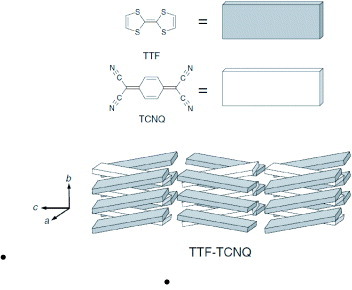
Recently, resistivity of TTF-TCNQ under pressures up to 8.0 GPa was studied using a cubic anvil apparatus [Citation24]. Figure shows the b-axis resistivity of TTF-TCNQ as a function of temperature at various pressures up to 8.0 GPa. At 1.1 GPa, the resistivity exhibits a metal–insulator transition at ∼54 K. In addition, there are two resistivity anomalies observed as clear peaks in the inverse temperature derivative of resistivity at 47 and 43 K (not shown here). Above 1.5 GPa, only a single charge-density-wave transition appears. Interestingly, the charge-density-wave state is gradually suppressed with increasing pressure above 3.0 GPa. The resistivity anomaly associated with the charge-density-wave transition near 30 K even at 8.0 GPa was found. At 8.0 GPa, however, the resistivity shows metallic behavior below ∼ 25 K after the charge-density-wave transition at TCDW=31 K, which is reminiscent of a typical semimetallic charge-density-wave state in NbSe3 [Citation14, Citation15]. This observation suggests a remnant Fermi surface after the charge-density-wave formation. A superconducting transition might occur below 2.5 K.
Figure 14 Temperature dependence of the resistivity of TTF-TCNQ under pressure. (Reproduced with permission from [Citation24]. Copyright 2007 The Physical Society of Japan.)

Figure shows the T–P phase diagram of TTF-TCNQ derived from the resistivity measurement for two samples. For pressures lower than 3 GPa, the pressure dependence of TCDW is consistent with the results of Friend et al [Citation60]: at 1.8 GPa, we observed a striking increase in TCDW(=72 K) due to the commensurability locking. Above 3 GPa, the charge-density-wave phase is gradually suppressed with increasing pressure. From this T–P phase diagram, the complete suppression of the charge-density-wave phase is expected near 9 GPa, where superconductivity might appear. The suppression of the charge-density-wave state by pressure was discussed in terms of the further lifting of the dimensionality and unlocking of the commensurability by the variation in band filling. A recent theoretical study [Citation61], however, showed the anisotropic compression by applying pressure, which leads to the bandwidth broadening and the decrease in the density of states at the Fermi level.
Figure 15 T–P phase diagram of TTF-TCNQ. The complete suppression of the CDW (charge-density-wave) phase is expected near 9 GPa. (Reproduced with permission from [Citation24]. Copyright 2007 The Physical Society of Japan.)
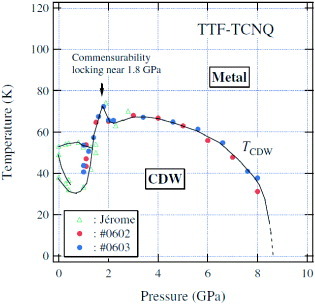
(TMTTF)2X: new aspect of unified T–P phase diagram
The (TM)2X series are well known as traditional quasi-one-dimensional compounds with highly anisotropic electronic structures. Here TM stands for TMTSF (tetramethyltetraselenafulvalene, selenium compounds) or TMTTF (tetramethyltetrathiafulvalene, sulfur compounds), and X denotes a monovalent anion. The one-dimensional character of (TM)2X compounds is essentially based on the anisotropy of the tight-binding overlap integrals along the three directions, ta : tb : tc = 1 : 0.1 : 0.005. The orders of magnitude for sulfur and selenium compounds in the (TM)2X compounds are ta ∼ 0.1 and 0.3 eV, respectively [Citation58].
At ambient pressure, (TMTSF)2PF6 undergoes the incommensurate spin-density-wave transition at 12 K [Citation2–4]. The spin-density-wave phase is suppressed by pressure and superconductivity appears at 1 K [Citation4]. The insulating state in (TMTSF)2X salts is a spin-density-wave, and the electron correlation and Fermi-surface nesting are the important factors. In the unified T–P phase diagram of (TMTTF)2X and (TMTSF)2X, pressure works to destroy the Fermi surface nesting, and the metallic state is stabilized [Citation2, Citation3]. Superconductivity is located next to the insulating spin-density-wave phase. A further increase in pressure makes the organic conductors a conventional metal, i.e. the Fermi liquid state. The high-temperature metallic state is discussed in terms of the Tomonaga–Luttinger liquid [Citation2].
In contrast to the (TMTSF)2X system, where the metal–insulator transitions are very sharp, the (TMTTF)2X salts exhibit a broad resistance minimum. A weak metallic behavior is changed into a weak semiconducting one with decreasing temperature. Pressure does not change markedly the broad resistance minimum. It has long been referred to as localization, since the more one-dimensional-like it is, the more likely it would be localized by even a small amount of impurities. Almost a decade has passed since the essence of the insulating phase at low temperature was understood as charge ordering due to charge disproportionation. This phase is now widely observed in quasi-one-dimensional and two-dimensional organic conductors. The charge order originated from the competition of transfer energy t the on-site Coulomb interaction U and the Coulomb interaction between the nearest sites V [Citation62, Citation63].
Almost two decades ago, a unified T–P phase diagram was proposed for (TM)2X families [Citation4]. This suggests that the members of the families belong to a sequence of electronic states from the spin-Peierls to the antiferromagnetic, spin-density-wave, and superconducting state on moving from the low-pressure range to the high-pressure range. In fact, superconductivity is subsequently observed in (TMTTF)2Br (ground state: antiferromagnetic state, TN = 15 K) [Citation64] and (TMTTF)2PF6 (ground state: spin-Peierls state, TsP = 15 K) [Citation65]. These observations confirm the proposal of the unified T–P phase diagram in the (TM)2X series.
Recently, Itoi et al [Citation25, Citation26] have measured the resistivities of (TMTTF)2AsF6 and (TMTTF)2SbF6, having the larger monovalent anion than that in the (TMTTF)2PF6, under pressures up to 10 GPa, using a cubic anvil apparatus. These compounds are advantageous for investigating the range of the T–P phase diagram, which is wider than that of (TMTTF)2PF6. Here, the observation of superconducting transition is a good evidence of the validity of the unified T–P phase diagrams for (TMTTF)2AsF6 and (TMTTF)2SbF6. This experiment is also motivated by the deep understanding of the one-dimensional physics like those of the Tomonaga–Luttinger liquid and Fermi liquid in a metallic phase [Citation66]. (TMTTF)2SbF6 exhibits the antiferromagnetic transition at TN=8 K and a charge ordering transition at TCO=154 K, whereas (TMTTF)2AsF6 shows the spin-Peierls transition at TsP = 14 K [Citation67] and a charge ordering transition at 102 K [Citation68]. By combining these facts with the concepts embodied in the general phase diagram, the superconducting phase may be stabilized with further application of pressure. Therefore, the systematic investigations of (TMTTF)2AsF6 and (TMTTF)2SbF6 have been eagerly anticipated in order to obtain the complete picture of the correlated electron system in the (TM)2X series.
Figure shows the temperature dependence of the resistivity for (TMTTF)2AsF6 under pressures P < 10 GPa [Citation25]. At ambient pressure, a metal–insulator transition is observed near Tρ=140 K, originating from the localization due to 1/4 Umklapp scattering. Here, Tρ stands for the temperature of the resistivity minimum. With increasing pressure, Tρ decreases to 27 K at 2 GPa, 8 K at 3 GPa, and 3 K at 4 GPa. Another characteristic temperature Ts is defined as the steepest point in the ρ(T) curve, which is associated with a spin-Peierls transition and/or spin density wave transition. Similarly to the pressure dependence of Tρ, Ts gradually shifts to lower temperatures with increasing pressure. For the low-pressure region below 1 GPa, Ts coincides with the result of 13C-NMR relaxation under pressure [Citation69]. At 4.5 GPa, the resistivity dramatically decreases below 2.38 K and reaches ∼10−4 Ω cm at 2 K, indicating superconducting transition. The value of Tc changes slightly with increasing pressure from 4.5 to 5.0 GPa, and Tc exhibits a maximum value of 2.64 K at 5 GPa. The T–P phase diagram for (TMTTF)2AsF6 derived from the resistivity measurement is shown in figure .
Figure 16 Temperature dependence of the resistivity of (TMTTF)2AsF6 under pressures up to 10 GPa. (Reproduced with permission from [Citation25]. Copyright 2007 The Physical Society of Japan.)
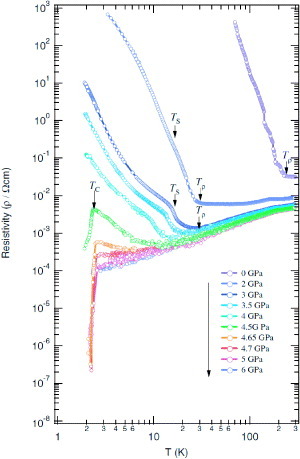
Figure 17 T–P phase diagram of (TMTTF)2AsF6. The arrows at the upper axis indicate locations of compounds (at ambient pressure) in the generic phase diagram: (a) (TMTTF)2PF6, (b) (TMTTF)2Br, (c) (TMTSF)2PF6, (d) (TMTSF)2ClO4. TLL, Mott I, CO, AF, SP, SDW, non-Fermi liquid and SC refer to Tomonaga–Luttinger liquid, Mott insulator, charge order, antiferromagnetic state, spin-Peierls, spin-density-wave and superconducting state, respectively. (Reproduced with permission from [Citation25]. Copyright 2007 The Physical Society of Japan.)
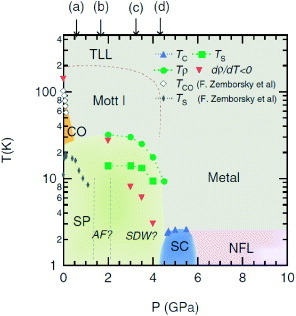
The metallic phase is stabilized above 5.5 GPa. There is a slight change in the power law behavior in the ρ(T) curve, where a dimensional crossover is likely to occur from the high-temperature Tomonaga–Luttinger liquid state to the low-temperature Fermi liquid state. For the high-temperature region, the Tomonaga–Luttinger liquid parameter Kρ was discussed using the relation ρ∝T16Kρ-3 (quarter-filled band case). The value of Kρ, was estimated as 0.20 at ambient pressure, indicating that (TMTTF)2AsF6 lies on the border between the one-dimensional Mott insulator and Tomonaga–Luttinger liquid state. In addition, the power law analysis for ρ(T) in the low-temperature region suggests the robust non-Fermi liquid in the vicinity of the superconducting phase. The exponent α given by ρ∝Tα is ∼1 at 5 GPa, increases with increasing pressure, and reaches 1.5 at 10 GPa. Above 10 GPa, the conventional Fermi liquid is overwhelming.
Figure shows the temperature dependence of the resistivity for (TMTTF)2SbF6 under various pressures up to 10 GPa [Citation26]. The compound (TMTTF)2SbF6 has the largest monovalent anion among (TMTTF)2X series. At ambient pressure, a metal–insulator transition is observed at ∼150 K. The metal–insulator transition is gradually suppressed with increasing pressure. At 1.5 GPa, an apparent change in slope is seen at Ts=20 K, where Ts is defined as the temperature at which a dip structure is observed. The origin of the dip anomaly may be associated with a phase transition related to the spin degree of freedom like the spin-Peierls phase. As shown in a recent 13C-NMR study [Citation70], both Tco and TN in (TMTTF)2SbF6 salt decrease under low pressure. Moreover, the results for the (TMTTF)2(AsF6)x(SbF6)1−x system indicated that the antiferromagnetic phase and the charge ordering state are suppressed as x increases, and then the spin-Peierls phase is induced [Citation71]. Therefore, the occurrence of the spin-Peierls phase is naturally expected after the suppression of the antiferromagnetic and charge ordering states in (TMTTF)2SbF6 by applying pressure. At low pressures, the resistivity minimum appears as indicated by Tρ. The pressure dependence of Tρ is very similar to that of (TMTTF)2AsF6. Figure shows the expanded plots for high-pressure region between 5.4 and 9.0 GPa. Above 5.7 GPa, the superconducting phase transition is clearly observed at Tc∼2.5 K and is still present at 9 GPa.
Figure 18 Temperature dependence of the resistivity of (TMTTF)2SbF6 under pressures up to 10 GPa. (Reproduced with permission from [Citation26]. Copyright 2008 The Physical Society of Japan.)
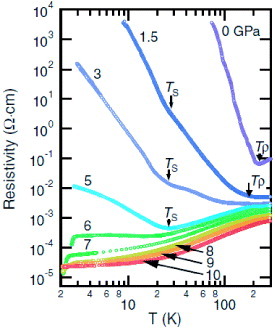
Figure 19 Expanded plots for high-pressure region between 5.4 and 9.0 GPa of (TMTTF)2SbF6. (Reproduced with permission from [Citation26]. Copyright 2008 The Physical Society of Japan.)

The T–P phase diagram for (TMTTF)2SbF6 derived from the resistivity measurement is shown in figure [Citation26]. The pressure dependence of Tc does not coincide with the unified T–P phase diagram derived from the resistivity measurements for (TMTTF)2PF6 and (TMTTF)2AsF6. A remarkable feature of (TMTTF)2SbF6 salt is a robust superconducting phase under pressure. At present, the origin of the difference in the superconducting phase between figures and is unclear. Here, we note the absence of the superconductivity under pressures up to 9.9 GPa in the organic Mott insulator β'-(BEDT-TTF)2AuCl2. It has a crystal structure similar to that of β'-(BEDT-TTF)2ICl2, which has the highest Tc among organics at ∼ 8 GPa [Citation72]. The reason for the contrasting behavior was discussed in terms of the difference in the anion size: In the β′-type family, the small anion enhances the electronic dimerization of BEDT-TTF donor through the structural interaction between the anions and BEDT-TTF molecules under pressure, leading to the increase in U/W and the suppression of superconducting phase. Thus, structural interactions between the molecules and anions may be an interesting problem in connection with the anomalously wide superconducting phase in (TMTTF)2SbF6.
Figure 20 T–P phase diagram of (TMTTF)2SbF6. CO, AF, SP, SDW, and SC refer to charge order, antiferromagnetic state, spin-Peierls, spin-density-wave, and superconducting states, respectively. (Reproduced with permission from [Citation26]. Copyright 2008 The Physical Society of Japan.)
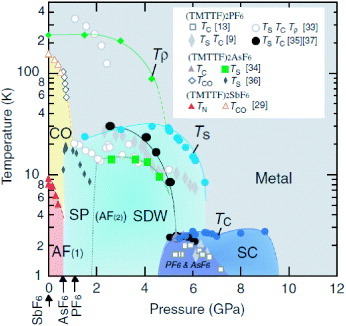
In addition, it should be noted that the pressure dependence of Tc shows two maxima of 2.8 K at 6 and 9 GPa and a minimum of 2.5 K at 7 GPa. Double maxima are absent in the generic T–P phase diagram by Jérome [Citation2]. The anomalously wide superconducting phase in (TMTTF)2SbF6 cannot be understood from the superconductivity mediated by the spin fluctuations, which is frequently discussed in the superconductivity appearing next to the antiferromagnetic ordered state. In a recent theoretical study based on the renormalization group technique [Citation73], it was predicted that the increasing dimensionality plays an important role in the occurrence of the superconducting phase away from the spin-density-wave phase. Further studies are necessary to clarify the superconducting state in (TMTTF)2SbF6 and the new general T–P phase diagram (figures and ). Thus the T–P phase diagram for (TMTTF)2SbF6 salt provides new intriguing physical problems in the one-dimensional electronic system.
κ-(BEDT-TTF)4Hg2.89Br8: robust superconductivity and non-Fermi liquid behavior in a doped Mott system under pressure
In 1987, Lubovskaya et al [Citation74] succeeded in synthesizing an intriguing ambient-pressure superconductor κ-(BEDT-TTF)4Hg2.89Br8. Although the donor layers had the usual κ-type packing, Hg ions in the anion layers formed a chain structure incommensurate against bromide and donor arrangements. If one assumes that mercury is divalent, the filling shift is about 10% based on the half-filled state. Indeed, a recent optical study revealed that the site charge (hole) per BEDT-TTF molecule in this salt was appreciably larger than 0.5, which is common in the usual κ-(BEDT-TTF)2X. In addition, a tight-binding band structure calculation predicted the ratio of the on-site Coulomb interaction U to the bandwidth W, U/W>1. The large U/W of κ-(BEDT-TTF)4Hg2.89Br8 suggests that this salt should be insulating, which is inconsistent with its observed physical properties. Therefore, it is concluded that the superconductivity of this organic material is caused by doping. In this way, the κ -(BEDT-TTF)4Hg2.89Br8 salt can be regarded as an electron system with a nearly half-filled band. This salt offers the possible link between other κ-type organic superconductors and high-Tc copper-oxide superconductors. In addition, with the advantage of the large compressibility of organics, the appearance of a novel electronic state under pressure is very likely.
Recently, careful resistivity measurements of κ-(BEDT-TTF)4Hg2.89Br8 under pressures up to 4.5 GPa have been performed by Taniguchi et al [Citation28]. Figure shows the temperature dependences of the in-plane resistivity ρ||(T,P) and the out of plane resistivity ρ⊥(T,P) at various pressures. At low pressures ∼0.45 GPa, the anisotropic temperature-dependent resistivity is observed: ρ||(T, 0 GPa) shows metallic behavior over the entire temperature range, whereas ρ⊥ (T, 0 GPa) shows semiconducting behavior just before the superconducting transition, which is reminiscent of the normal state in the high-Tc copper-oxide superconductors. The anisotropic temperature dependence of the resistivity and its suppression by pressure are clearly observed. The temperature dependences of other BEDT-TTF salts do not show such as anisotropy while the resistivity usually has large anisotropy.
Figure 21 Temperature dependence of the resistivity in κ-(BEDT-TTF)4Hg2.89Br8 under various pressures. (a) In-plane resistivity and (b) its expansions at low temperatures. All data are normalized to ρ||(200 K, 0.48 GPa). (c) Out-of-plane resistivity and (d) its expansions at low temperatures. (Reproduced with permission from [Citation28]. Copyright 2007 The Physical Society of Japan.)
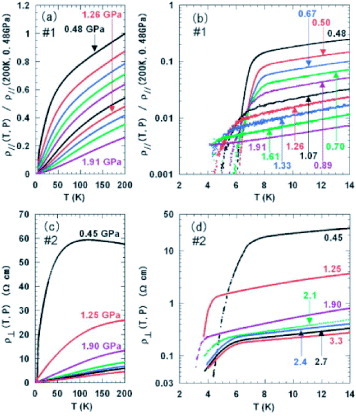
Figures (b) and (d) show the low-temperature parts of the in-plane and out of plane resistivities. Superconducting transition is observed at all pressures. Such persistence of superconductivity is rather unusual for an organic material. Onset Tc is plotted as a function of pressure in figure (a). The pressure dependence of Tc exhibits a maximum at ∼0.7 GPa. As shown by figure (c), the increase in Tc in the range 0–0.6 GPa may be related to the pressure dependence of the residual resistivity ρ0(P). In the low-pressure range, ρ0(P) increases rapidly with decreasing pressure. Given that the large enhancement of the impurity scattering near an antiferromagnetic quantum critical point has been predicted theoretically [Citation75], κ-(BEDT-TTF)4Hg2.89Br8 salt at ambient pressure is likely located near the antiferromagnetic quantum critical point. On the other hand, the decrease in Tc in the range 0.7–2.0 GPa cannot be explained in terms of the impurity effect because ρ0 still decreases. One convincing scenario is that the magnetic fluctuations are suppressed by pressure, and the magnetic fluctuations play a vital role in forming the Cooper pair.
Figure 22 (a) Pressure dependence of Tc (onset) in κ-(BEDT-TTF)4Hg2.89Br8. (b) Pressure dependence of the power law exponent n in κ-(BEDT-TTF)4Hg2.89Br8, which is given by ρ||(T)=ρ0||+ATn. (c) Pressure dependence of ρ0||(P)/ρ0||(1.9 GPa) in κ-(BEDT-TTF)4Hg2.89Br8. (d) Temperature dependence of the in-plane resistivity at low pressures of 0.48 and 1.91 GPa. (e) ρ0||(T, 1.9 GPa) measured with the cubic anvil apparatus. (Reproduced with permission from [Citation28]. Copyright 2007 The Physical Society of Japan.)

It is well known that the temperature dependence of the normal-state resistivity is essential for understanding various interactions such as electron–electron and electron–phonon interactions, scattering by spin fluctuations associated with magnetic orders, as well as the mechanism of unconventional superconductors. In κ-(BEDT-TTF)4Hg2.89Br8, the temperature dependence of resistivity just above Tc shows power-law behavior. In particular, the resistivity at low pressures is linear with temperature, as demonstrated by ρ||(T, 0.48 GPa) in figure (d). The data obtained at 0.48 GPa and 0.50 GPa were well fitted by ρ(T) =ρ0+ATn with n= 1.0 and 1.1, respectively. This behavior is intriguing for layered organics because other κ-type salts show T2 dependence from just after the metal–insulator transition to much higher pressures [Citation6]. This is reminiscent of the anomalous metallic phase in underdoped copper-oxide superconductors or heavy fermion compounds near the antiferromagnetic quantum critical point. With increasing pressure, ρ(T) started to show a positive curvature, which gradually increases. Finally, the resistivity changed as T2 at ∼1.9 GPa, as demonstrated by ρ||(T, 1.91 GPa) in figure (d). The power n obtained from fitting is plotted as a function of pressure in figure (b); its value stabilizes at n∼ 2 above 1.9 GPa.
As the origin of the dip structure of Tc(P), a pressure-induced structural phase transition is unlikely because the high-temperature resistivity shows smooth variation with increasing pressure indicating no sudden change in the lattice system over the entire pressure range. In addition, there is no anomaly in residual resistivity at ∼2 GPa. These observations may suggest that the dip structure of Tc at 2.0 GPa is not due to a drastic change in the lattice system, but has a purely electronic origin. As for the dip in Tc, it is worth noting that there is a well-defined boundary between the non-Fermi liquid and Fermi liquid states at Pc ∼ 2 GPa, where the dip in Tc appears. One naively expects that two superconducting phases with different origins are present across Pc.
Summary
Organic conductors are so compressible that the transfer integrals between the molecular orbitals can be easily increased by moderate pressures. Superconductivity, charge- or spin-density-waves were observed for relatively low pressures P<1.5 GPa. Recently, new interesting phenomena have been discovered at higher pressures P <10 GPa. The examples are superconductivity with the highest Tc in β′-(BEDT-TTF)2ICl2 at ∼8 GPa [Citation9], the critical phenomena in the 2–3 GPa region [Citation21–23, Citation39, Citation40], and 2 K superconductivity in a wide pressure range in (TMTTF)2SbF6 [Citation26].
The quality of the high-pressure studies strongly depends on the quality of the hydrostaticity of the pressure. As demonstrated by the pressure effect of the superconducting transition in NbSe3 [Citation14], the pressure with high homogeneous quality is indispensable for investigating the nature of the superconducting state as well as the coexistence of the superconductivity and charge-density-wave state. It is also worth noting that the softness of organics results in the large thermal contraction on cooling from 300 to 4.2 K [Citation37]. However, organic conductors are already well compressed in the pressure range of the cubic anvil apparatus (P > 1 GPa). Thus, the volume change during a temperature cycle is small, enabling precise measurements of temperature dependence of the resistivity. In order to generate the high quality homogeneous pressure, a cubic anvil device combined with a cryostat designed by Môri and Takahashi has been used in many transport measurements under pressures up to 10 GPa [Citation32]. In addition, the advances in the pressure transmitting media, Daphne 7373 and 7474 oil, play an important role in the high-quality pressure studies in organic conductors [Citation33, Citation34, Citation44].
In spite of the soft nature of the organics, there are various insulating states, originating from the strong electron correlation, which are resistant to pressures up to 1.5 GPa. Since the discovery of superconductivity in β′-(BEDT-TTF)2ICl2 [Citation9], various insulators, stable to pressure due to the electron correlation, were metallized under pressure and a variety of fascinating physical phenomena were found. Examples include the anomalous metallic state for (TTM-TTP)I3 with quasi-one-dimensional half-filled band [Citation18–20], the possible quantum critical point in the reduced π-donor system (MeDH-TTP)2AsF6 [Citation21–23], metallization of the Peierls insulator TTT-TCNQ [Citation24], new aspect in unified T–P phase diagram in (TMTTF)2X (X=AsF6 or SbF6) [Citation25–27], and the robust superconducting state against pressure and non-Fermi liquid behavior in the doped Mott system κ-(BEDT-TTF)4Hg2.89Br8 [Citation28]. These observations provide us new problems, and the pressure will increasingly play a more important role the field of organic conductors in the future.
Finally, we would like to comment on what might happen in organic conductors above 10 GPa. From the viewpoint of large compressibility in organic conductors, the cell length is reduced by several per cent at 1 GPa that is one order of magnitude larger than the cell contraction of conventional inorganic materials. Thus, pressures above 10 GPa may possibly lead to novel electronic states in organic conductors, where the intermolecular distance is as short as the interatomic chemical bond in constituent molecules to approach the structures of `multi-atomic compounds' rather than molecular ones [Citation76]. This situation is very interesting because this is closely related to pressure-induced superconductivity in elemental materials such as iodine [Citation77, Citation78]. Solid iodine is a molecular crystal at ambient pressure and room temperature, but under pressure, iodine shows molecular dissociation at PM = 21 GPa. Above 21 GPa, iodine is in a monatomic state exhibiting a superconducting transition at Tc = 1 K. The search for superconductivity in `multi-atomic compounds' in organic conductors is a future challenge.
References
- MurataKKagoshimaSYasuzukaSYoshinoHKondoR 2006 J. Phys. Soc. Japan 75 051015 http://dx.doi.org/10.1143/JPSJ.75.051015
- JéromeD 1991 Science 252 1509 http://dx.doi.org/10.1126/science.252.5012.1509
- KangWHannahsS TChaikinP M 1993 Phys. Rev. Lett. 70 3091 http://dx.doi.org/10.1103/PhysRevLett.70.3091
- JéromeDMazaudARibaultMBechgaardK 1980 J. Phys. Lett. 41 L95 http://dx.doi.org/10.1051/jphyslet:0198000410409500
- KanodaK 1997 Physica C 287 299 http://dx.doi.org/10.1016/S0921-4534(97)00266-9
- KanodaK 2006 J. Phys. Soc. Japan 75 051007 http://dx.doi.org/10.1143/JPSJ.75.051007
- KagawaFMiyagawaKKanodaK 2005 Nature 436 534 http://dx.doi.org/10.1038/nature03806
- YamajiK 1982 J. Phys. Soc. Japan 51 2787 http://dx.doi.org/10.1143/JPSJ.51.2787
- TaniguchiHMiyashitaMUchiyamaKSatohKMôriNOkamotoHMiyagawaKKanodaKHedoMUwatokoY 2003 J. Phys. Soc. Japan 72 468 http://dx.doi.org/10.1143/JPSJ.72.468
- AdachiTOjimaEKatoKKobayashiHMiyazakiTTokumotoMKobayashiA 2000 J. Am. Chem. Soc. 122 3238 http://dx.doi.org/10.1021/ja0001254
- AdachiTTanakaHKobayashiHMiyazakiT 2001 Rev. Sci. Instrum. 72 2358 http://dx.doi.org/10.1063/1.1361085
- JaccardDWilhelmHJéromeDMoserJCarcelCFabreJ M 2001 J. Phys.: Condens. Matter 13 L89 http://dx.doi.org/10.1088/0953-8984/13/4/104
- MurataKTeramachiTGuoFYoshinoHMôriNMakiSTanakaSYamadaJAnzaiH 1999 Synth. Met. 103 1891 http://dx.doi.org/10.1016/S0379-6779(98)00594-3
- YasuzukaSMurataKFujimotoTShimotoriMYamayaK 2005 J. Phys. Soc. Japan 74 1782 http://dx.doi.org/10.1143/JPSJ.74.1782
- YasuzukaSYamayaKOkajimaYTandaSTakeshitaNMitamuraHNakanishiTMôriN 2005 J. Phys. Soc. Japan 74 1787 http://dx.doi.org/10.1143/JPSJ.74.1787
- YasuzukaSMurataKYoshinoHFujimotoTShimotoriMNakamuraMTadokoroM 2006 J. Phys. Soc. Japan 75 014704
- YasuzukaSMurataKShimotoriMFujimotoTYamadaJ-IKikuchiK 2006 J. Phys. Soc. Japan 75 024701 http://dx.doi.org/10.1143/JPSJ.75.024701
- YasuzukaSMurataKFujimotoTShimotoriMKawamotoTMoriTHedoMUwatokoY 2006 J. Phys. Soc. Japan 75 053701 http://dx.doi.org/10.1143/JPSJ.75.053701
- YasuzukaSMurataKFujimotoTShimotoriMKawamotoTMoriTHedoMUwatokoY 2006 J. Low Temp. Phys. 142 197 http://dx.doi.org/10.1007/BF02679493
- YasuzukaSMurataKFujimotoTShimotoriMKawamotoTMoriTHedoMUwatokoY 2007 J. Phys. Soc. Japan Suppl. A 76 178
- YasuzukaSKobayashiKNishikawaHYoshinoHMurataK 2006 J. Phys. Soc. Japan 75 083710 http://dx.doi.org/10.1143/JPSJ.75.083710
- KobayashiKYasuzukaSNakanishiTYokogawaHNishikawaHYoshinoHMurataK 2006 J. Low Temp. Phys. 142 323 http://dx.doi.org/10.1007/BF02679516
- KobayashiKYasuzukaSNishikawaHYoshinoHMurataK 2007 J. Phys. Soc. Japan Suppl. A 76 172
- YasuzukaSMurataKArimotoTKatoR 2007 J. Phys. Soc. Japan 76 033701 http://dx.doi.org/10.1143/JPSJ.76.033701
- ItoiMKanoMKuritaNHedoMUwatokoYNakamuraT 2007 J. Phys. Soc. Japan 76 053703 http://dx.doi.org/10.1143/JPSJ.76.053703
- ItoiMArakiCHedoMUwatokoYNakamuraT 2007 J. Phys. Soc. Japan 77 023701
- ArakiCItoiMHedoMUwatokoYMoriH 2007 J. Phys. Soc. Japan Suppl. A 76 198
- TaniguchiHOkuhataTNagaiTSatohKMôriNShimizuYHedoMUwatokoY 2007 J. Phys. Soc. Japan 76 113709 http://dx.doi.org/10.1143/JPSJ.76.113709
- KobayashiHKatoRKobayashiASaitoGTokumotoMAnzaiHIshiguroT 1986 Chem. Lett. 15 89 http://dx.doi.org/10.1246/cl.1986.89
- KontaniH 2003 Phys. Rev. B 67 180503 http://dx.doi.org/10.1103/PhysRevB.67.180503
- MiyazakiTKinoH 2003 Phys. Rev. B 68 220511 http://dx.doi.org/10.1103/PhysRevB.68.220511
- MôriNTakahashiHTakeshitaN 2004 High Pressure Res. 24 225 http://dx.doi.org/10.1080/08957950410001661909
- MurataKYoshinoHYadavH OHondaYShirakawaN 1997 Rev. Sci. Instrum. 68 2490 http://dx.doi.org/10.1063/1.1148145
- YokogawaKMurataKYoshinoHAoyama 2007 Japan J. Appl. Phys. 46 3636 http://dx.doi.org/10.1143/JJAP.46.3636
- HirayamaKYamazakiTFukazawaHKohoriYTakeshitaN 2008 J. Phys. Soc. Japan 77 075001 http://dx.doi.org/10.1143/JPSJ.77.075001
- PeggsG H 1983 High Pressure Measurement Technique London Applied Science
- GalloisBGaultierJBechelFFilholAVettierC 1987 Mol. Cryst. Liq. Cryst. 148 279 http://dx.doi.org/10.1080/00268948708071795
- FujiwaraNMatsumotoTNakazawaK KHisadaAUwatokoY 2007 Rev. Sci. Instrum. 78 073905 http://dx.doi.org/10.1063/1.2757129
- ItouTKanodaKMurataKMatsumotoTHirakiKTakahashiT 2004 Phys. Rev. Lett. 93 216408 http://dx.doi.org/10.1103/PhysRevLett.93.216408
- ItouTKanodaKHirakiKTakahashiTMurataKMatsumotoT 2005 Phys. Rev. B 72 113109 http://dx.doi.org/10.1103/PhysRevB.72.113109
- SettaiRTakeuchiTOnukiY 2007 J. Phys. Soc. Japan 76 51003 http://dx.doi.org/10.1143/JPSJ.76.051003
- SettaiRMiyauchiYTakeuchiTLevyFSheikinIOnukiY 2008 J. Phys. Soc. Japan 77 73705 http://dx.doi.org/10.1143/JPSJ.77.073705
- KirichenkoA SKornilovA VPudalovV M 2005 Instrum. Exp. Tech. 48 813 http://dx.doi.org/10.1007/s10786-005-0144-5
- MurataK et al 2008 Rev. Sci. Instrum. 79 085101 http://dx.doi.org/10.1063/1.2964117
- SchulzH J 1990 Phys. Rev. Lett. 64 2831 http://dx.doi.org/10.1103/PhysRevLett.64.2831
- MoriTInokuchiHMisakiYYamabeTMoriHTanakaS 1994 Bull. Chem. Soc. Japan 67 661 http://dx.doi.org/10.1246/bcsj.67.661
- MoriTKawamotoTYamauraJEnokiTMisakiYYamabeTMoriHTanakaS 1997 Phys. Rev. Lett. 79 1702 http://dx.doi.org/10.1103/PhysRevLett.79.1702
- MoriT 2004 Chem. Rev. 104 4947 http://dx.doi.org/10.1021/cr030660x
- TsuchiizuMSuzumuraYBourbonnaisC 2007 Phys. Rev. Lett. 99 126404 http://dx.doi.org/10.1103/PhysRevLett.99.126404
- NishikawaHMorimotoTKodamaTIkemotoIKikuchiKYamadaJYoshinoHMurataK 2002 J. Am. Chem. Soc. 124 730 http://dx.doi.org/10.1021/ja011114t
- NishikawaHSatoYKikuchiKKodamaTIkemotoIYamadaJOhshioHKondoRKogoshimaS 2005 Phys. Rev. B 72 052510 http://dx.doi.org/10.1103/PhysRevB.72.052510
- MerinoJMcKenzieR H 2001 Phys. Rev. Lett. 87 237002 http://dx.doi.org/10.1103/PhysRevLett.87.237002
- KobayashiASuzumuraYHigaMKondoRKagoshimaSNishikawaH 2008 J. Phys.: Condens. Matter 20 125205 http://dx.doi.org/10.1088/0953-8984/20/12/125205
- NishikawaHIsakaTKodamaTIkemotoIKikuchiKYamadaJMisakiY 2001 Synth. Met. 120 903 http://dx.doi.org/10.1016/S0379-6779(00)00957-7
- NishikawaH et al 2006 Chem. Lett. 35 912 http://dx.doi.org/10.1246/cl.2006.912
- ColemanL BCohenM JSandmanD JYamagishiF GGaritoA FHeegerA J 1973 Solid State Commun. 12 1125 http://dx.doi.org/10.1016/0038-1098(73)90127-0
- FerrarisJCowanD OWalatkaV VPerlsteinJ H 1973 J. Am. Chem. Soc. 95 948 http://dx.doi.org/10.1021/ja00784a066
- JéromeDSchulzH J 1982 Adv. Phys. 31 299 http://dx.doi.org/10.1080/00018738200101398
- JéromeD 2004 Chem. Rev. 104 5565 http://dx.doi.org/10.1021/cr030652g
- FriendR HMiljakMJéromeD 1978 Phys. Rev. Lett. 40 1048 http://dx.doi.org/10.1103/PhysRevLett.40.1048
- IshibashiSTerakuraK private communication
- SeoHHottaCFukuyamaH 2004 Chem. Rev. 104 5005 http://dx.doi.org/10.1021/cr030646k
- SeoHMerinoJYoshiokaHOgataM 2006 J. Phys. Soc. Japan 75 051009 http://dx.doi.org/10.1143/JPSJ.75.051009
- BalicasLBehniaKKangWCanadellEAubansenzierPJeromeDRibaultMFabreJ M 1994 J. Phys. I 4 1539 http://dx.doi.org/10.1051/jp1:1994205
- ChowD SZamborszkyFAlaviBTantilloD JBaurAMerlicC ABrownS E 2000 Phys. Rev. Lett. 85 1698 http://dx.doi.org/10.1103/PhysRevLett.85.1698
- GiamarchiT 2004 Chem. Rev. 104 5037 http://dx.doi.org/10.1021/cr030647c
- FujiyamaSNakamuraT 2006 J. Phys. Soc. Japan 75 014705
- NadFMonceauPKaboubP LFabreJ M 2006 Europhys. Lett. 73 567 http://dx.doi.org/10.1209/epl/i2005-10443-1
- ZamborszkyFYuWRaasWBrownS EAlaviBMerlicC ABaurA 2002 Phys. Rev. B 66 081103 http://dx.doi.org/10.1103/PhysRevB.66.081103
- YuWZhangFZamborszkyFAlaviBBaurAMerlicC ABrownS E 2004 Phys. Rev. B 70 121101 http://dx.doi.org/10.1103/PhysRevB.70.121101
- NakamuraTMaedaK 2004 J. Phys. IV 114 123 http://dx.doi.org/10.1051/jp4:2004114026
- TaniguchiHMiyashitaMUchiyamaKSatoRIshiiYSatohKMôriNHedoMUwatokoY 2005 J. Phys. Soc. Japan 74 1370 http://dx.doi.org/10.1143/JPSJ.74.1370
- FuseyaYOgataM 2007 J. Phys. Soc. Japan 76 093701 http://dx.doi.org/10.1143/JPSJ.76.093701
- LyubovskayaR NZhilyaevaE AZvarykinaA VLaukhinV NLyubovskiiR BPesotskiiS I 1987 JETP Lett. 45 530
- KontaniHOhnoM 2006 Phys. Rev. B 74 014406 http://dx.doi.org/10.1103/PhysRevB.74.014406
- KogoshimaSKondoRMatsushitaNHigaMOvsyannikovS VShaydarovaN AShchennikovV VManakovA YLikhachevaA Y 2007 Phys. Status Solidi b 244 418 http://dx.doi.org/10.1002/pssb.200672530
- ShimizuKTamitaniNTakeshitaNIshizukaMAmayaKEndoS 1992 J. Phys. Soc. Japan 61 3853 http://dx.doi.org/10.1143/JPSJ.61.3853
- ShimizuKAmayaKSuzukiN 2005 J. Phys. Soc. Japan 74 1345 http://dx.doi.org/10.1143/JPSJ.74.1345